Defense Maritime Solutions, Inc., based in Chesapeake, Virginia, has been awarded a significant contract to supply essential components for Virginia-class submarines, with production taking place in the United Kingdom.
The $14,699,232 firm-fixed-priced stand-alone contract is for the procurement of 12 main shaft seal assemblies, crucial for the submarines’ main propulsion systems, according to a notice from the U.S. Department of Defense.
“All work will be performed in Havant, Hampshire, United Kingdom, and is expected to be completed by March 2026,” the notice states.
This international collaboration underscores the interconnected nature of defence manufacturing and supply chains.
The contract specifies that “working capital funds (Navy) in the full amount of $14,699,232 will be obligated at time of award, and funds will not expire at the end of the current fiscal year.”
The contract was awarded as a sole-source requirement under the authority of 10 U.S. Code 3204(a)(1), with Defense Maritime Solutions being the only company solicited.
“One company was solicited for this sole-source requirement under the authority of 10 U.S. Code 3204(a)(1) with one offer received,” the notice elaborates.
The Naval Supply Systems Command Weapon Systems Support, based in Mechanicsburg, Pennsylvania, is overseeing the contracting activity, designated under contract number N00104-24-F-ZL02.



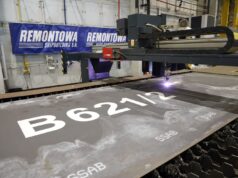
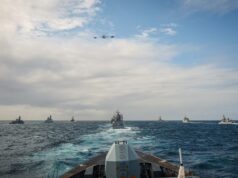

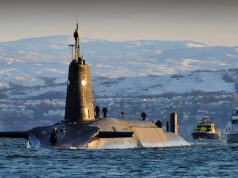

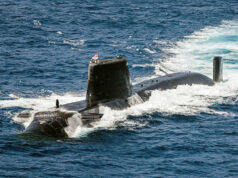

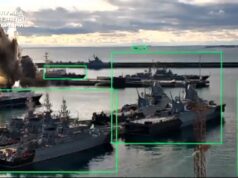
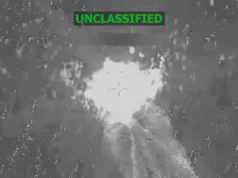
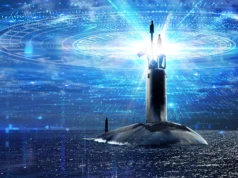

In plain English “interconnected nature of defence manufacturing and supply chains” means a US Subsidiary of Warsila (Defence Maritime Solutions Inc) has been awarded a contract. And it will be built by another subsidiary of Wartsila, Shaft Line Solutions Ltd at Havant.
Good business for Wartsila and good business for U.K. PLC, extra orders in our supply chain help to maintain and expand capability and secures jobs.
And let’s face it given the dire state the US Nuclear Submarine Industry and supply chain is in, it can lead to more orders.
Excellent job, I know the USA are fiercely loyal to having most of its kit built in the states but hopefully they will allow us more work in the future to benefit both countries defence industries.
It probably isn’t out of choice but sheer necessity, if you think we took the foot of the gas post Cold War it’s nothing compared to US. In the 00’s they were only producing 1 SSN pa and their supply chain was decimated.
Now to try and replace the old Cold War Los Angeles and Ohio boats they need to produce 2 SSN and 2 SSBN pa, and they aren’t managing to do it.
At present they are decommissioning Subs faster than they can replace them so by 2029 they will be down to only 46 SSN and want a Battle-force of 66 by 2045, most estimates say it will not get there till 2050.
Unless they get help that is, so watch this space as lots of opportunities for UK and Australia.
Thought the USN baseline build schedule would be 2 SSNs and 1 SSBN per annum?🤔
Agree that the AUK components of AUKUS should/will have a golden opportunity to participate in USN supply chain for SSNs, principally because of their collective experience/expertise building SSN(A), which will serve the departure point for the design of SSN(X). 🤔
Hi M8 yes it is and that’s what congress is authorising so 2 SSN in each FY and has been since FY2011.
Background issue is the massive building strength of US Nuclear Submarine industry in the Cold War, it literally broke the USSR.
Between 1972 and 1996 they built 66 Los Angeles boats plus 18 Ohio SSBN between 1976 and 1997.
So you built a fleet of 84 Boats built in just 25 years that’s 3.36 pa.
And then 2 things happened which when combined pretty well hammered the US submarine building industry and its supply chain.
Due to the lack of orders the industry contracted, had zero investment, lost a huge amount of the workforce and some parts of the supply chain folded completely. So when in FY2011 Obama upped the Ante back up to 2 PA it hit a brick wall.
The simple fact is that the US was no longer able to build Submarines as fast as they were ordered, the average is 1.2 pa and only in 1 year (2018) have 2 boats been commissioned. To make it worse the Ohios are now desperately in need of replacing so more capacity is needed.
The USS Virginia was ordered in 1998 and commissioned in 2004, as of now there are just 24 completed and 22 in service. Which is a huge problem as the US Battle force is now targeting 66 by 2045 plus 12 Columbia class SSBN.
What makes a bad situation even worse is that exactly the same contraction in budget hit the refit and maintenance facilities which are needed to keep the existing boats operational. The US has a back log which has resulted in 36% of the fleet being non operational due to lack of facilities and skilled workers.
IMHO I suspect one of the reasons for AUKUS is the mighty US Military / Industrial complex is in deep trouble regarding Nuclear Submarines. China may only have 9 at present but once they get a decent design they can do what they do best. Build, Build and Buikd.
The cheapest, most sensible and quickest way to boost the Western Powers and USN Submarine fleet is to get a 2nd stream online and if BAe and the combined U.K, US and Australian industries can add 16 to 20 boats to the mix then that’s a pretty neat way out of a jam.
Agree w/ your historical analysis of post CW-1 period, and further ramifications for USN post 9/11. Also agree the ChiComs are the paramount future threat, though the Orcs bear some attention. Believe BAES should be encouraged to seek USN SSN maintenance and refit work at a US facility. Longer term, it may prove beneficial for BAES to become the third supplier of SSNs, but that may involve a larger capital investment than BAES would tolerate. In the interim, Australian investment in UK and US submarine infrastructure should prove beneficial, including enhancement of supply chain resiliency. 🤞
BTW, though no one else apparently believes this to be the case, predict that Pillar 2 initiatives will collectively, ultimately prove to be more consequential than Pillar 1 in spurring greater investment, employment, and defence/defense capability enhancement over the period to 2050. 🤔
The issue with BAe doing Maintenance at a US facility is many have gone and what’s left is pretty run down. I have a very odd feeling that the opposite may happen and some come over here instead. Which would explain why we are buying 2 new floating Drydocks, to supplement the Faslane Ship Lift.
MOD are throwing money at the Nuclear industry at present. Faslane, Rosyth and Devonport are all getting serious investment in facilities and extra bodies being trained up.
🤔 Intriguing idea. RN may eventually have greater than sufficient infrastructure to maintain its own fleet? Wonder whether the Aussies are contemplating something similar for HMAS Sterling? Would facilitate forward basing of USN SSNs in Europe and increase collective AUKUS footprint w/in Indo-Pacific theater. Very interesting…🤔
In terms of costs and manufacturing capacity will we ever see a time when AUKUS produce one type of submarine for the SSN role and one type for the SSBN role therefore eliminating some of the bottlenecks, introducing competition into this fantastic market and allowing true economies of scale?
(Not in my lifetime, perhaps).
Then we loose tge ability to design our own. Bad enough as it is
Where did I write that?
That’s what said. One design for an SSN and one for an SSBN. So the design would effectively be electric boats with minor changes in UK ones. I cant see how that would create competition. The opposite in fact
All I am going to add to this convo is that GE Electric Boat supplied the project team for the Astutes onwards; but, of course, your worries are such a concern.
GDEB or general dynamics electric boat. GE don’t built subs
Well we sort of already do better than that as the U.K boats are developed in a generational arrangement. Each generation of SSBN brings in a new level of tech (not just a new Reactor) and the following SSN is very much a smaller but highly leveraged design, so you get a lot of commonality in the production and supply chain.
The reason ours look very different to the USN ones is we have a different set of requirements and our operating ethos is different. For starters we aren’t operating in the Pacific nor trying to pack a load out of TLAM into an SSN that would bust the Bank 😉 We build smaller but wider and theirs just seem to get longer and longer.
as
As for the SSBN we have fewer SLBM onboard but use a common launch module, so again ours are smaller.
As for being worried about U.K. PLC being left behind I’m not concerned as there have been bits from US & UK boats for decades that originate in the others factories.
Adding informed opinion to the debate.
Thank you Rodders!
Might it not be possible for the US to adopt some SSN-As, by including an extra cruise missile launch module or two (APM)? If it actually incorporates the best tech from all three countries, why wouldn’t they?
We might not be operating in the Pacific (much) but SSN-A will be.
Labour government may surprise observers and commit one Astute, and eventually, 1-2 SSN(A) to the Indo-Pacific theater. 🤔
It may surprise you to know but SSN(A) will incorporate some iteration of the VPM, simple reason is the US isn’t developing TLAM for torpedo launch anymore. So we need VLS and so do the RAN !
If I were to bet it will be 2 or 4 VP so 14 or 28 TLAM or other options, as we don’t tend to like as Big a Stick as the USN I’d guess 2 VPM but it has to be a flexible design.
Potentially, a load out of SLCM-N onboard SSN-A from the early 2040s? RN SSNs would then wield a HUGE stick. 🤔😉
SSN(A) is the first iteration of a common design, all three nations are contributing to the design and the associated trades studies. SSN(X) will probably be a design evolution of SSN(A). Some SSN(X) features will then back feed into SSN(A). Rinse, repeat. And thus there will be a continuous design process, ad infinitum. 🤔
We have a trade surplus with the US, and they are our largest export market, despite the fact they hate buying from abroad and we have no trade deals. Shows what those trade deals are worth (not much)
Contrast with the EU where before Brexit we had a large and growing trade defecit (which somehow has been allowed to grow further post Brexit)